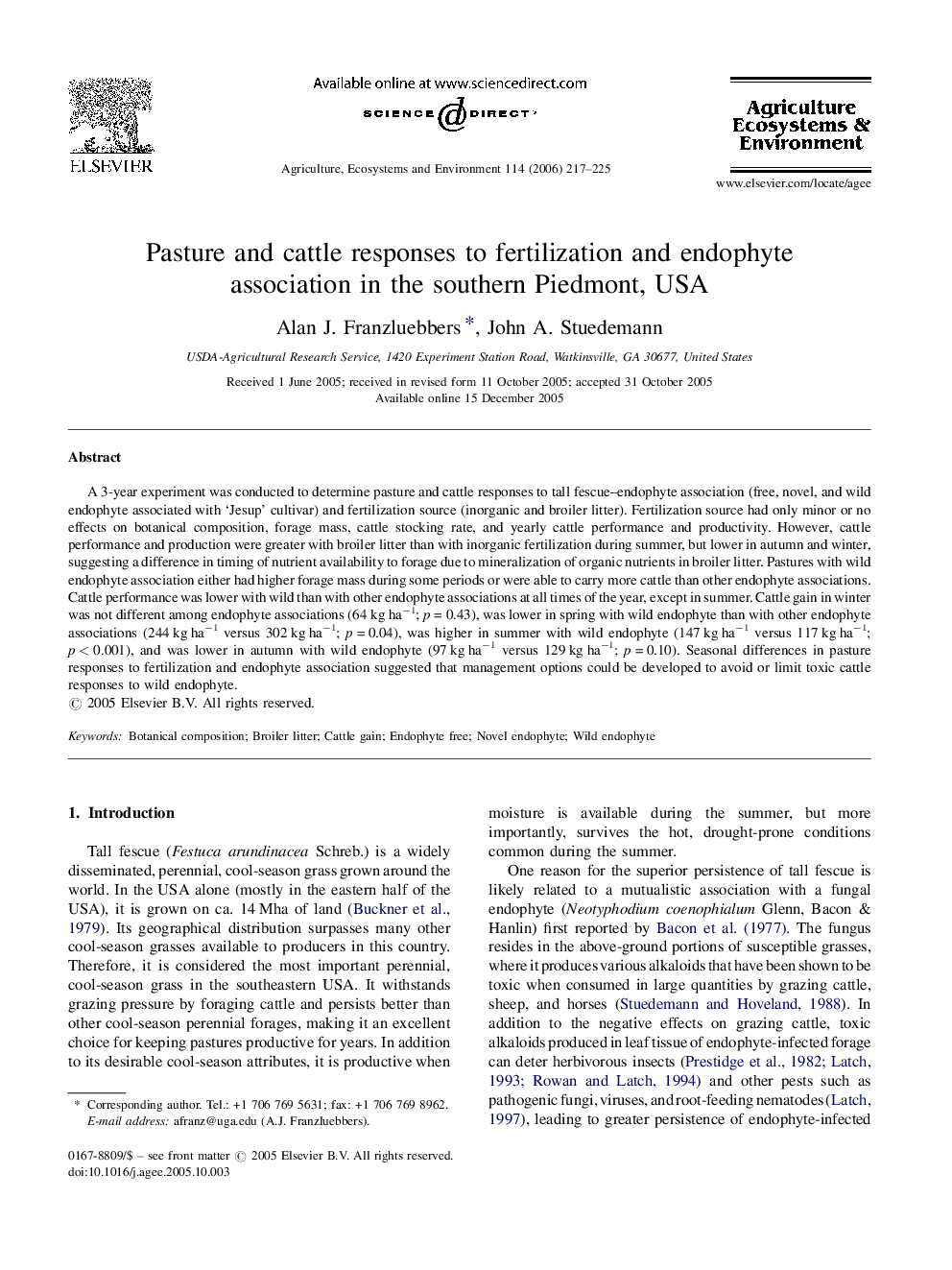| Article ID | Journal | Published Year | Pages | File Type |
|---|---|---|---|---|
| 2416059 | Agriculture, Ecosystems & Environment | 2006 | 9 Pages |
Abstract
A 3-year experiment was conducted to determine pasture and cattle responses to tall fescue-endophyte association (free, novel, and wild endophyte associated with 'Jesup' cultivar) and fertilization source (inorganic and broiler litter). Fertilization source had only minor or no effects on botanical composition, forage mass, cattle stocking rate, and yearly cattle performance and productivity. However, cattle performance and production were greater with broiler litter than with inorganic fertilization during summer, but lower in autumn and winter, suggesting a difference in timing of nutrient availability to forage due to mineralization of organic nutrients in broiler litter. Pastures with wild endophyte association either had higher forage mass during some periods or were able to carry more cattle than other endophyte associations. Cattle performance was lower with wild than with other endophyte associations at all times of the year, except in summer. Cattle gain in winter was not different among endophyte associations (64 kg haâ1; p = 0.43), was lower in spring with wild endophyte than with other endophyte associations (244 kg haâ1 versus 302 kg haâ1; p = 0.04), was higher in summer with wild endophyte (147 kg haâ1 versus 117 kg haâ1; p < 0.001), and was lower in autumn with wild endophyte (97 kg haâ1 versus 129 kg haâ1; p = 0.10). Seasonal differences in pasture responses to fertilization and endophyte association suggested that management options could be developed to avoid or limit toxic cattle responses to wild endophyte.
Keywords
Related Topics
Life Sciences
Agricultural and Biological Sciences
Agronomy and Crop Science
Authors
Alan J. Franzluebbers, John A. Stuedemann,
